Tracing footsteps through Aquae Sulis
A visit to the magnificent Roman Baths in Bath, Somerset, is an experience not to be missed. The ancient complex that stands resplendent in the centre of the historic city of Bath is breath-taking. The Romans certainly left their imprint on the city, and Bath remains a high-regarded UNESCO World Heritage Site.
I highly recommend booking your Roman Bath tickets in advance as you wouldn’t want to leave disappointed. I can honestly say that exploring the Roman Baths was one of the highlights of our trip to Bath.
The Roman Baths are located next to the beautiful Bath Abbey and courtyard and creates such an incredible backdrop you feel like you’re strolling around an open-air museum.
I’d seen many pictures of the Roman Baths, and I had naively thought that our visit would just include a stroll around the exquisite Great Bath; oh, how wrong was I. A self-guided tour around the Roman Baths uncovers so much more of the ancient thermal spa.

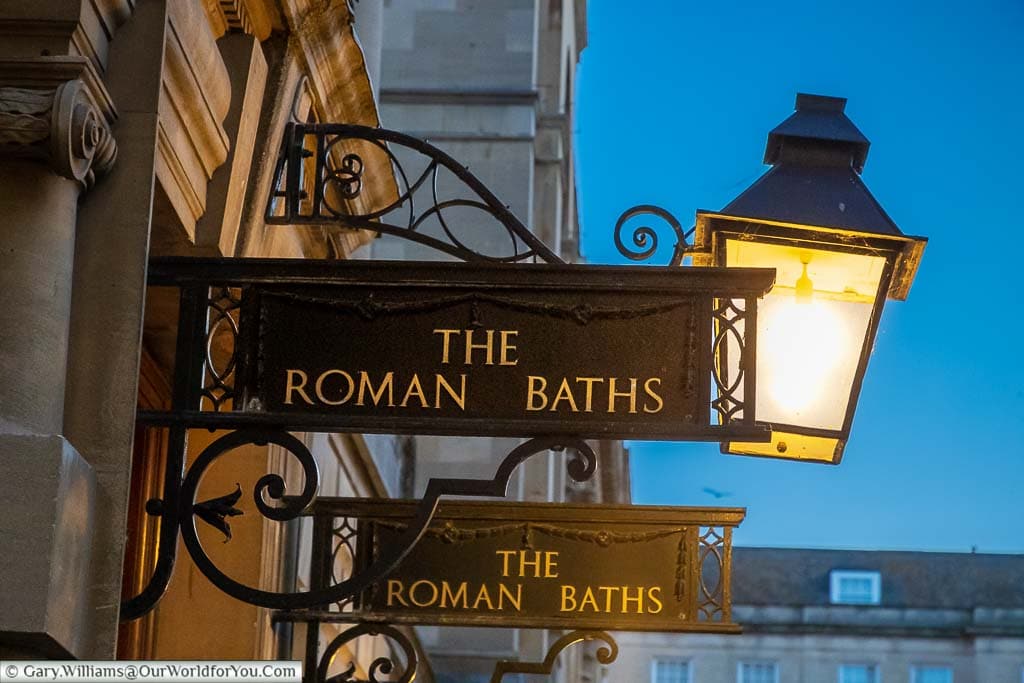
Where are the Roman Baths?
How to get to the Roman Baths
- By Train
The central railway station in Bath is Bath Spa, 1/3 mile away (around an 8-minute walk). A high-speed service runs from London Paddington.
- On Foot
If you are in the city, head to the historic centre and the Roman Baths are located next to Bath Abbey.
- By bus or Coach
Arrival by coach or bus, you will be dropped off at Bath bus station, which is only five minutes’ walk from the Roman Baths. National Express run a regular service from London Victoria.
- By Car
If you are arriving by car, there are many central car parks in Bath, or alternatively, you can use the Park and Ride facility.
Discovering the Roman Baths in Bath
History at your fingertipsThe Romans founded the thermal spa city of Bath in AD 60-70 and, over the following 300 years, continued to construct a temple and bathing complex. The Roman Baths were named after the Goddess Minerva Sulis, and Bath was known in Latin as Aquae Sulis.
The Roman Baths at Bath continued to be used by the Romans until their withdrawal from Britain in the early 5th-century. The baths then fell into disrepair and were ultimately lost to flooding and silting over.
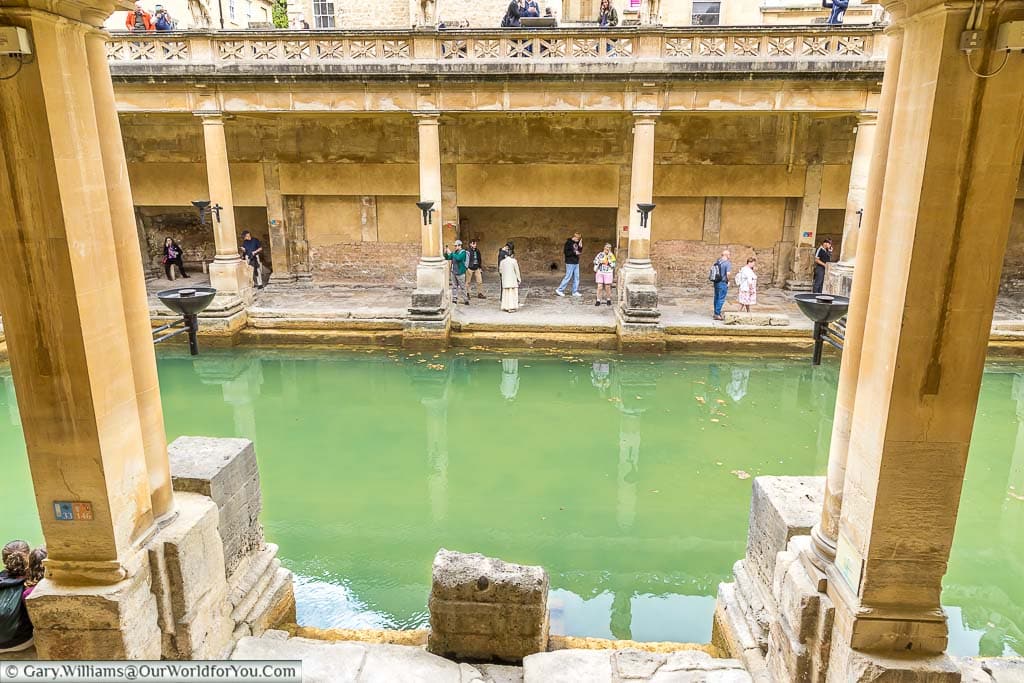
It wasn’t until the Victorians explored the site in the late nineteenth century and discovered the hidden Roman Baths that they began excavating. The Victorians continued erecting the stunning buildings surrounding the sacred thermal spa, and today all the architecture on street level around the bathing complex dates from the 19th-century.
The grand opening of the Baths was in 1897.
You enter the Roman Baths through an ornate Victorian hall; ensure you look up at the beautiful dome above. Also, don’t forget to pick up your personal audio guide, which provides invaluable information at a touch of a button.
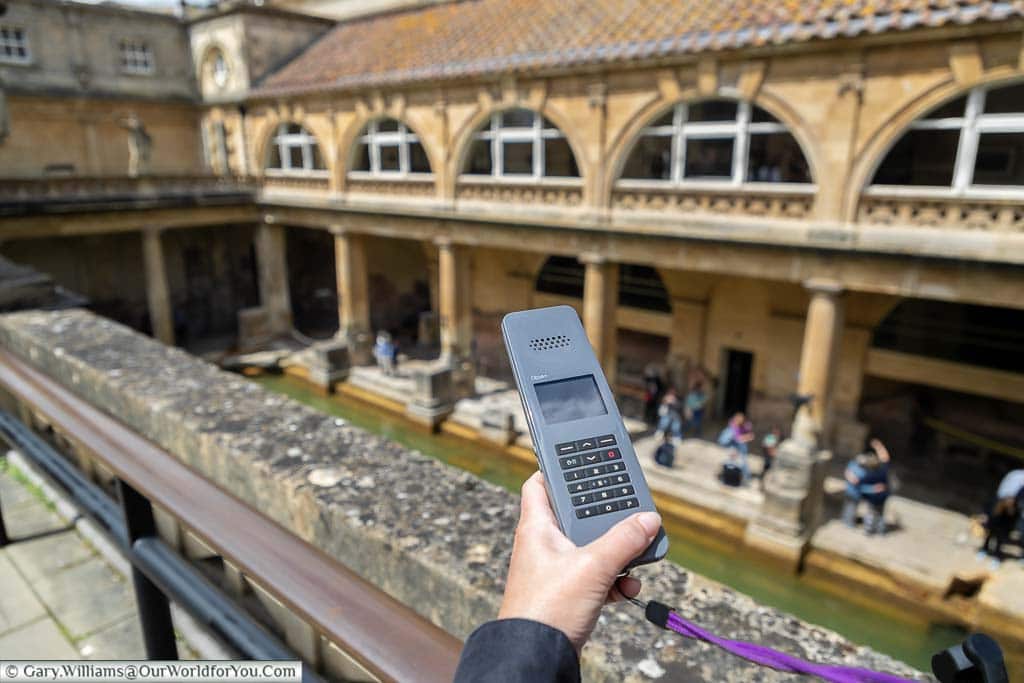
You’ll be effortlessly guided through the main elements of the Roman Baths, including the Sacred Spring, the Roman Bath House, the Roman Temple, and priceless Roman artefacts.
The historic Roman Baths in Bath was one of the great religious spas of the ancient world. Bath is also one of eleven Great Spa Towns of Europe recognised by UNESCO World Heritage in 2021.
The breath-taking Great Bath Terrace
Exploring Bath’s Roman legacy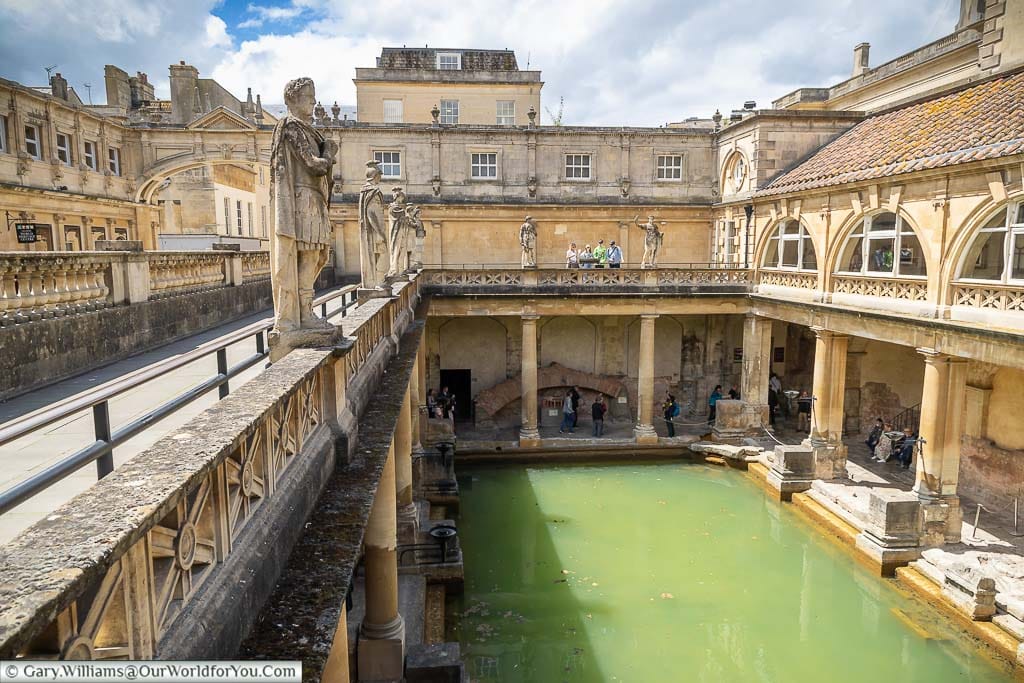
Golden pillars surround the ancient rectangular bath; you genuinely feel you are somewhere exceptional, especially as there are very few Roman sights to be found in the UK.
The terrace is surrounded on three sides by grand statues of Roman emperors and governors of Britain, which were erected in 1894.
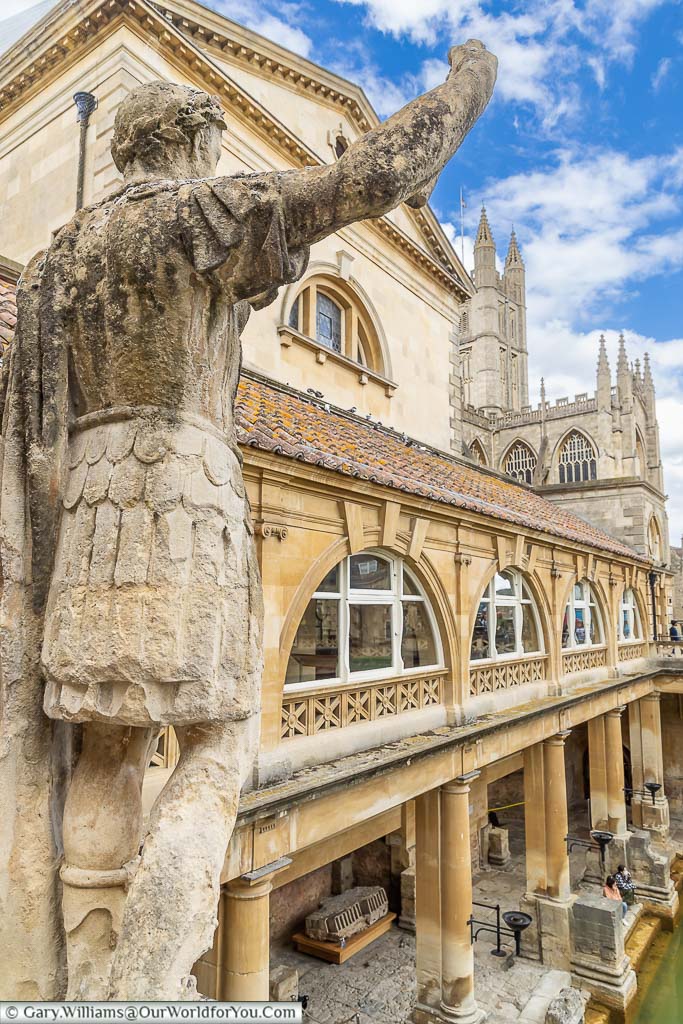
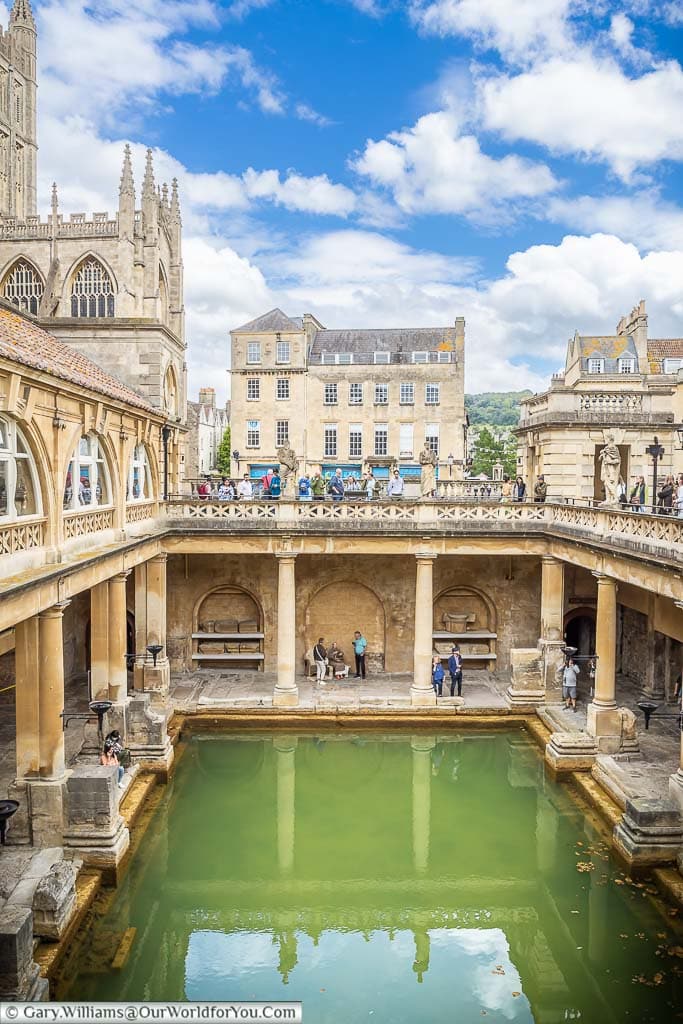
There is no rush ambling around the gorgeous terrace; you’re not on a timed ticket, and you can stop and start your audio guide whenever you wish.
From the Great Bath terrace, not only do you have an unobscured view of the thermal bath beneath, but you also have the magnificent sight of Bath Abbey in one direction and York Street Arch in the other.
I didn’t want to leave the terrace. I could have stood there all day and soaked up the surroundings.
If you're intrigued to visit the historic cities of Bath and Bristol, then why not check out Lonely Planet's pocket travel guide. Full of helpful advice, interesting facts and time-saving tips.
You can pick it up for your Kindle or in good old paperback.
Exploring the Roman Bath House complex
A rare Temple PedimentWe now head further down into the Roman Baths Museum and discover how this astonishing Roman bathing complex once looked.
The Great Baths and Scared Spring in Aquae Sulis are just the tip of the iceberg regarding how the thermal spa and temple once looked.
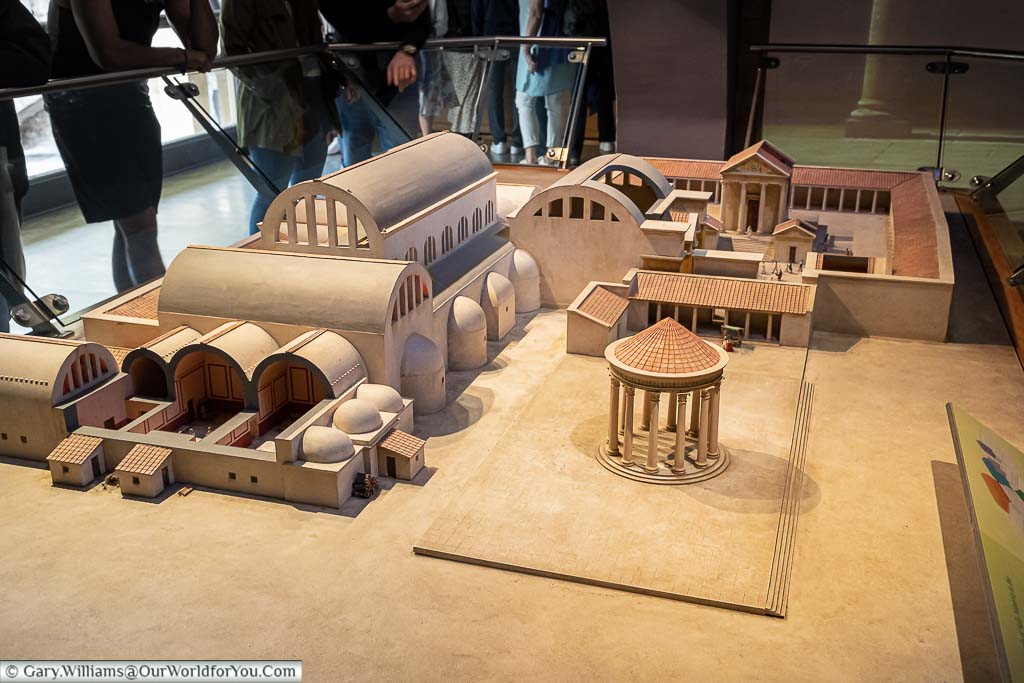
Not only did the Great Bath have a vast vaulted roof, but it would also have been surrounded by collonaded passageways, ornate pillared porticos and a Temple Courtyard.
The Temple Pediment is one of only two Roman Britain classical temples. The Bath temple would have housed the statue of the goddess Sulis Minerva, where worshippers gathered to pray.
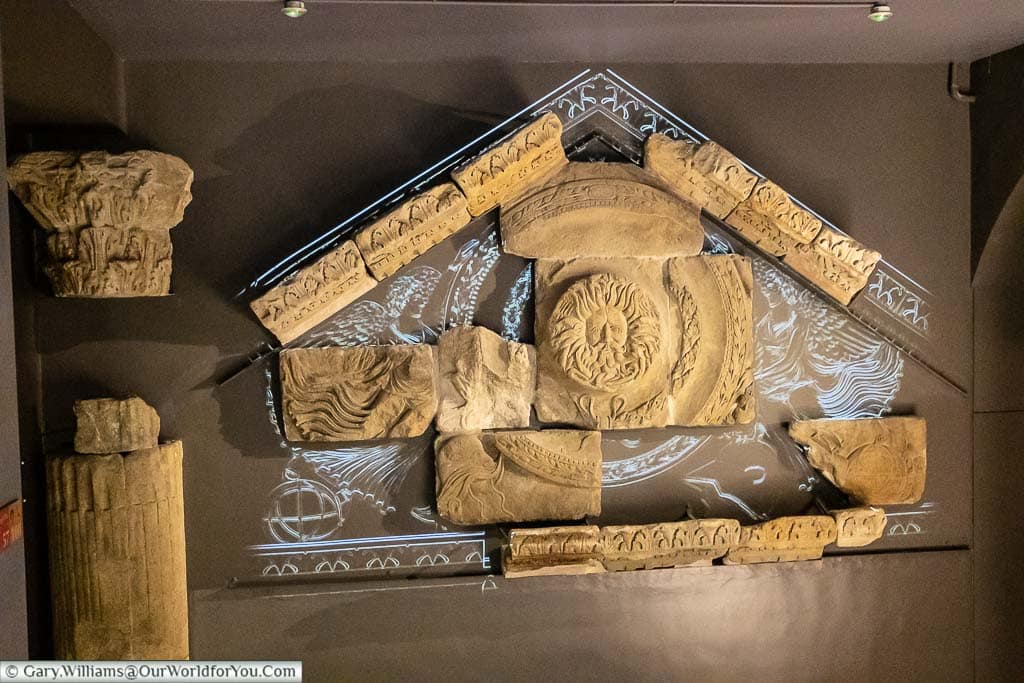
Tourist Information
Roman history beneath your feet
From prayers to sacrificeIt isn’t until you dig a little deeper into these Roman achievements that you realise the extent of their temples and sacred spas. I was amazed at how far and wide the Roman Baths extended underground.
The historic Roman Baths were one of the great religious spas of the ancient world.
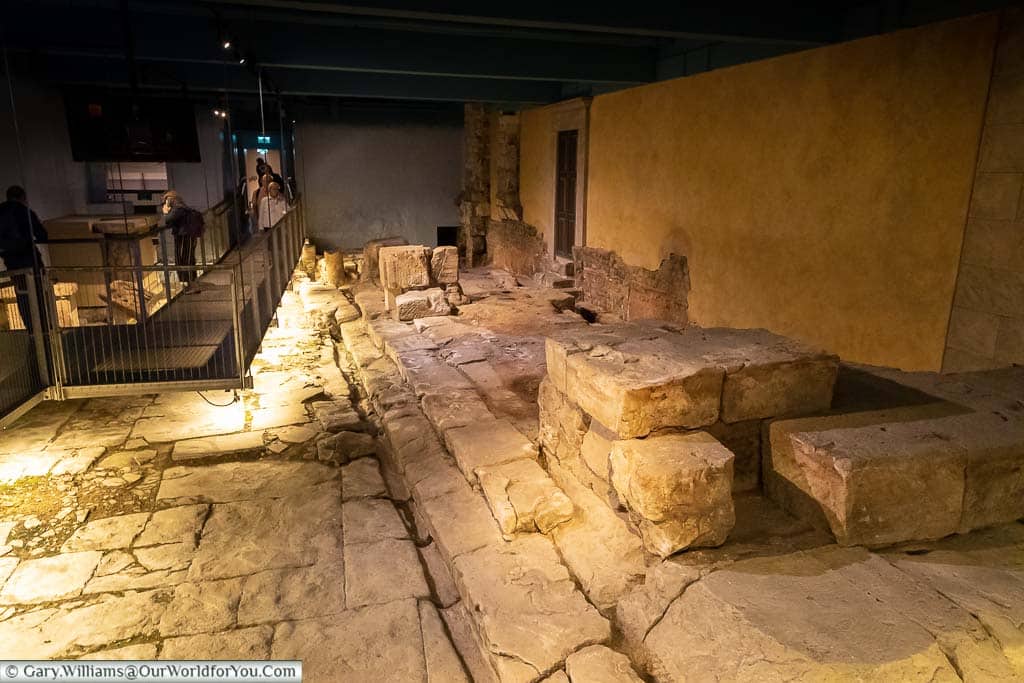
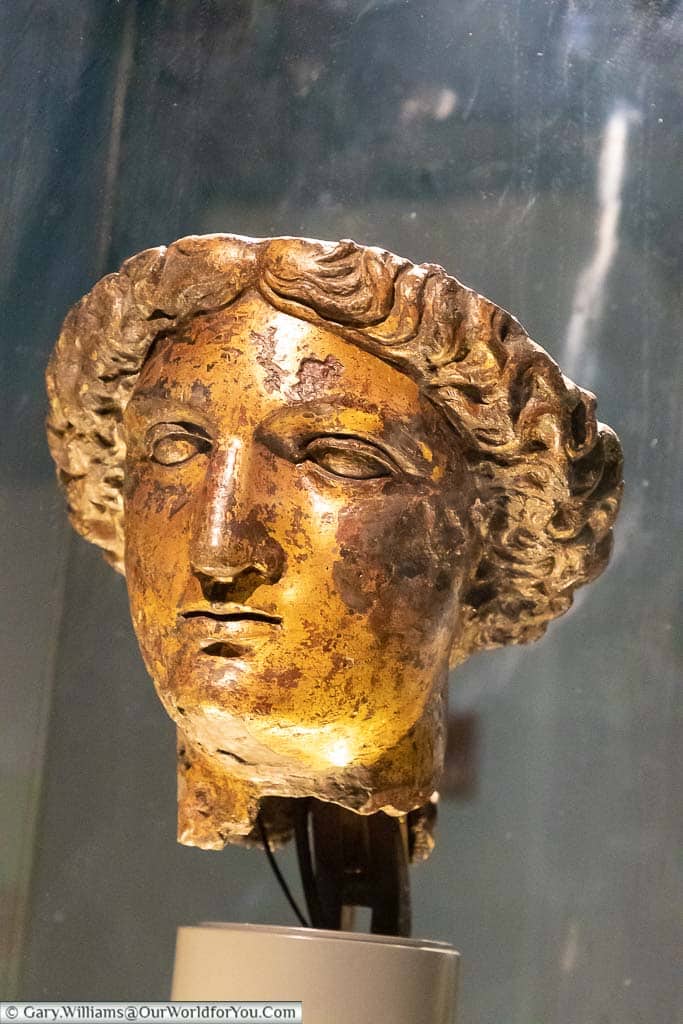
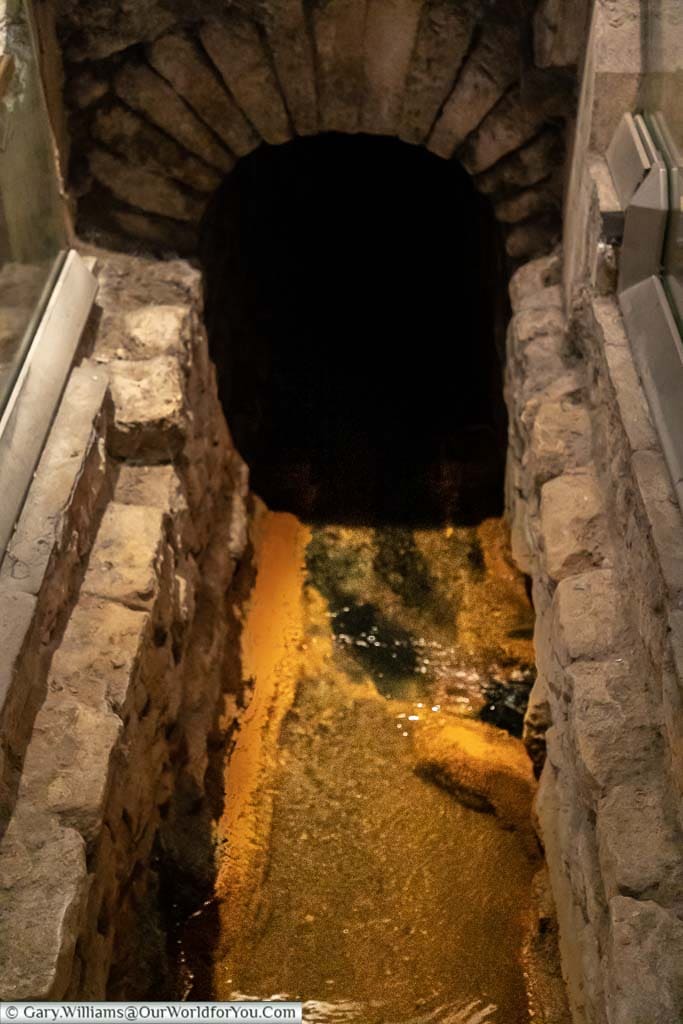
Here you’ll see the gilt bronze head of the goddess Sulis Minerva; the sculpture is believed to date from the 1st- century AD and is an extremely rare find.
Also, keep an eye out for one of the ancient Roman drains that fed the sacred baths.
Where to stay in Bath
The Great Bath at Bath
The envy of northern EuropeWe now return to the Great Bath on the lower level, and once again, it is breath-taking.
This is why I love history so much; we’re just passing through this ever-changing world and need to catch these sights whenever we can.
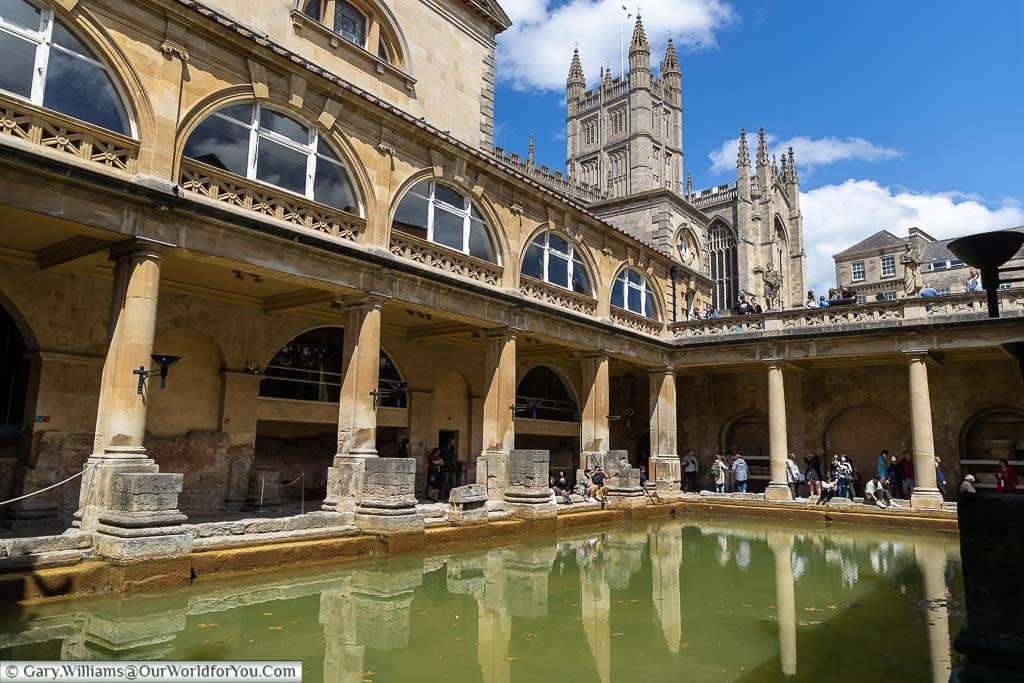
The Great Bath is undoubtedly the centrepiece of this stunning complex. Thousands of years ago, it would have been a precious jewel of Britain.
Roman bathers would have visited from near and far to worship Goddess Minerva Sulis and indulge in the sacred waters.
When the Romans visited the vast hot spa pool thousands of years ago, the Great Bath would have been housed beneath a barrel-vaulted roof. Stretching 20 metres skyward with striking arches all around, creating quite an impressive sight.
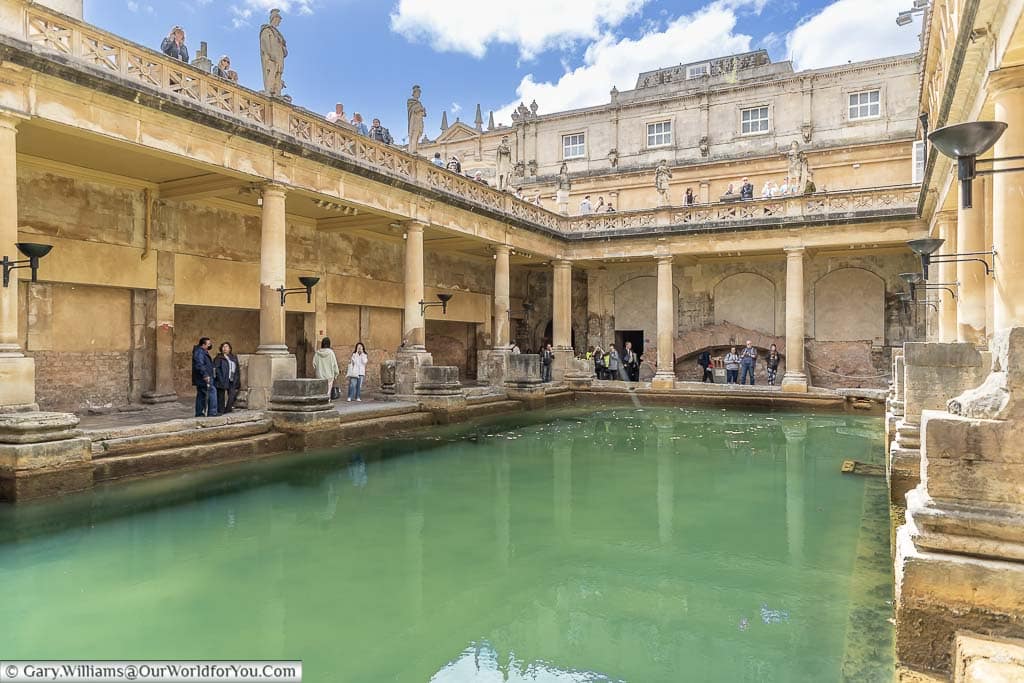
The bath had four steps on all sides leading down into the spring, which would have been at an ideal bathing depth of around 5ft (1.6 metres).
The soothing bath was fed directly from the sacred spring. I imagine it would have been a wonderfully indulgent experience.
Join a Bath walking tour
During this fascinating 2-hour walking tour of Bath, you’ll discover the many delights of the ancient city and its magnificent Georgian architecture. Stroll around the Circus and the Royal Crescent and enjoy the charm of Pulteney Bridge.
If you select the option to include the visit to the breath-taking Roman Baths, then you’re in for a treat.
Admiring the Sacred Spring
From ancient saunas to plunge poolsDeep in the soul of the Roman Baths, you can see where the gurgling heart of the Sacred Spring is emerging. The natural hot spring bubbles away at 46°C, and the mineral-rich water wends its way through the thermal spa to the Great Bath nearby.
The source of the spa water is from the nearby Mendip Hills and flows through limestone aquifers thousands of metres below ground. Geothermal energy raises the temperature, and the water flows through faults in the limestone until it eventually gurgles up into the welcoming Roman Baths.
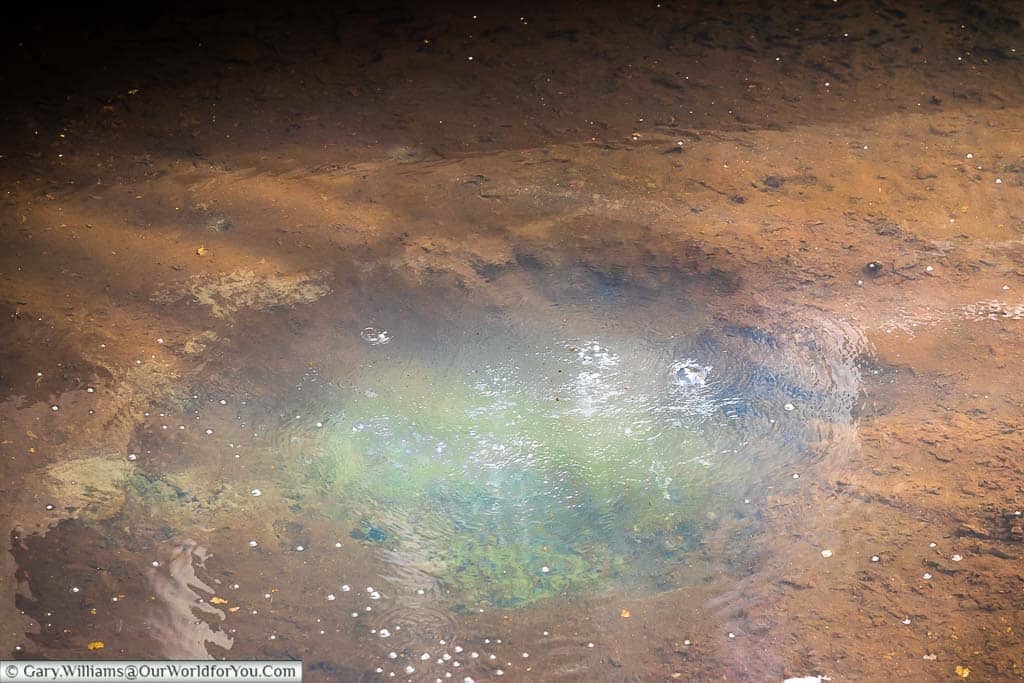
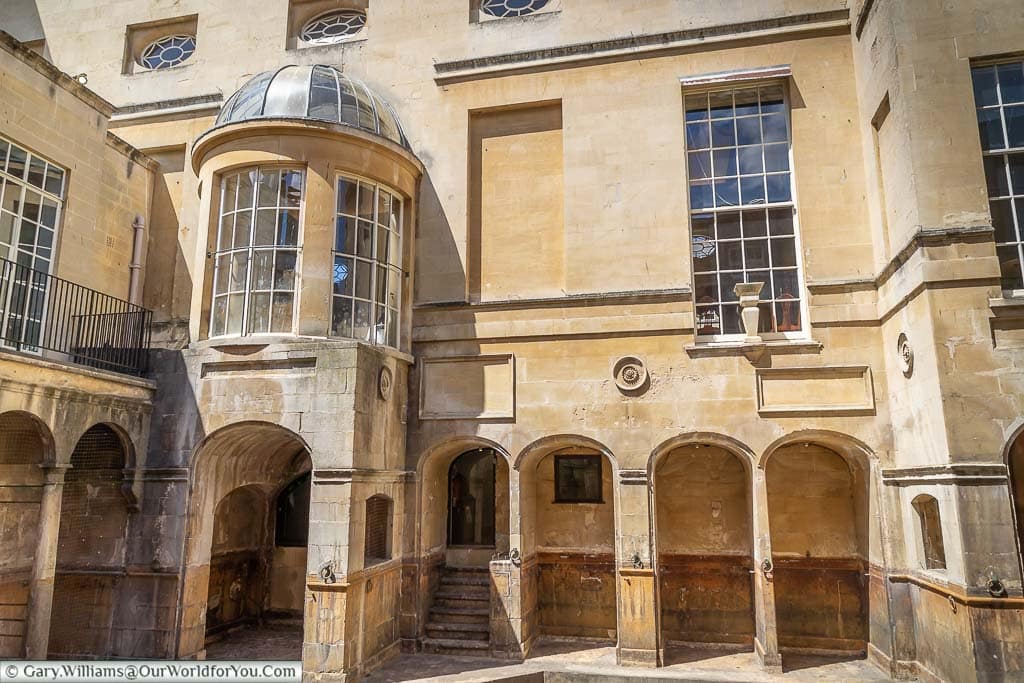
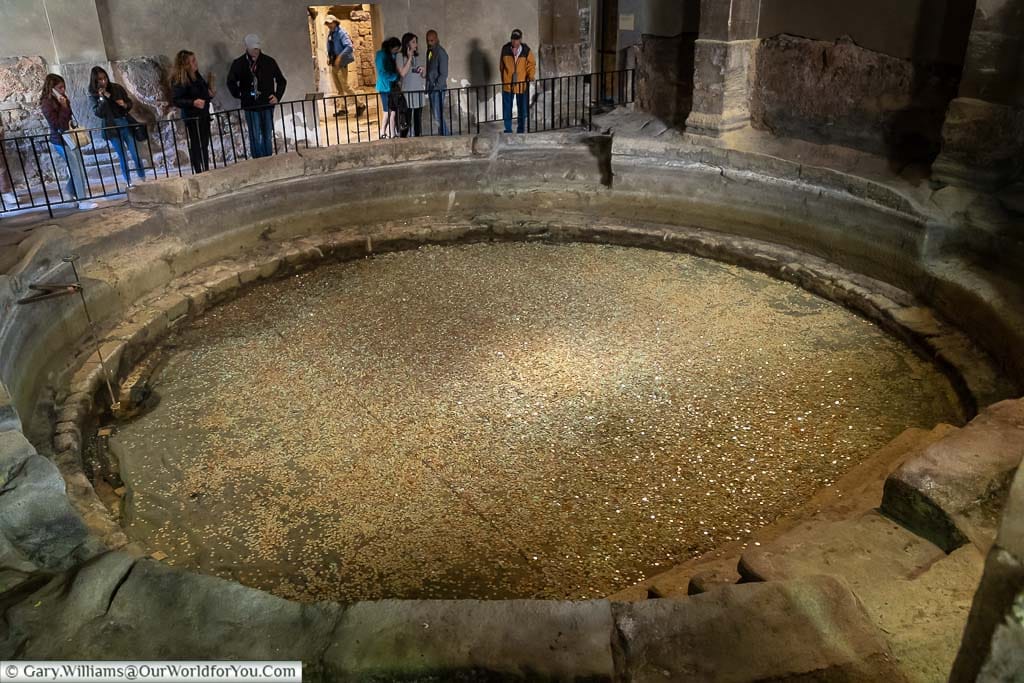
Towards the end of the self-guided tour of the Roman Baths, you can even taste the famous spa water containing 43 minerals but be warned, it isn’t chilled.
Even though you cannot dip your toes in the Great Bath, you can visit the Thermae Bath Spa. Here you can relax in the open-air rooftop pool and bathe in the mineral-rich waters of the natural thermal spring, which still flows hot water today.
Would you like to see more of the Roman Baths? Why not check out our YouTube experience on our visit?
Why not subscribe to our YouTube channel and get the latest clips as we post them?
Disclaimer
* This post may contain links to affiliated sites where we earn a small commission at no additional charge to you.

